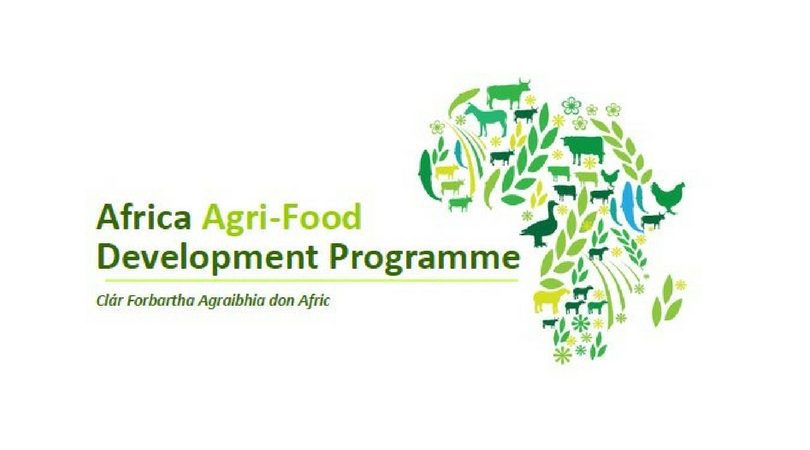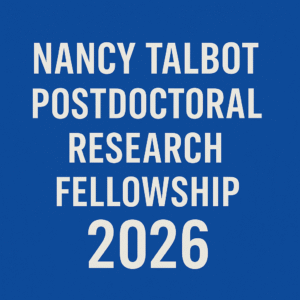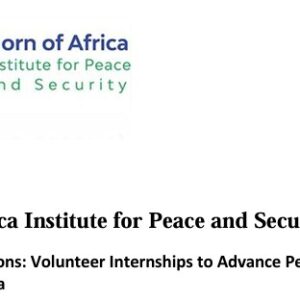
Are you an African entrepreneur in the agri-food sector looking to take your business to the next level? The Africa Agri-Food Development Programme (AADP) 2025/2026 offers you an exceptional opportunity to enhance your company’s potential through substantial financial support, expert training, and expansive market access. This initiative aims to significantly boost Africa’s agri-food sector, promoting sustainable growth and innovation.
About the Africa Agri-Food Development Programme
Vision and Mission
The AADP strives to foster innovation, sustainability, and productivity in Africa’s agri-food sector by empowering businesses with resources, knowledge, and networking opportunities.
History and Background
Established to address critical food security issues and economic growth barriers, AADP has successfully facilitated numerous impactful projects across Africa.
Eligibility Criteria
Who Can Apply?
Applications are open to African agri-food companies, including SMEs engaged in farming, processing, packaging, distribution, and agri-tech innovations.
Countries Eligible for Participation
All African countries are eligible, emphasizing inclusivity and widespread development.
Application Process
How to Apply
- Submit applications online via the official programme website.
- Include a detailed project proposal and relevant supporting documents.
Important Dates and Deadlines
- Application Opens: November 1, 2025
- Deadline for Submission: January 31, 2026
- Programme Commences: April 2026
Programme Benefits
Financial Support and Funding
Selected participants will receive funding to support project implementation and growth.
Technical Assistance and Training
Gain access to tailored training and expert technical assistance to boost your operational efficiency and productivity.
Market Access and Networking
Enjoy opportunities to access local and international markets, networking with key industry stakeholders.
Key Objectives of the Programme
Boosting Agricultural Productivity
Empowering businesses to increase their output and efficiency significantly.
Enhancing Food Security
Contributing directly to food availability and affordability across Africa.
Encouraging Sustainable Practices
Promoting eco-friendly, sustainable agri-food business operations.
Areas of Focus
Crop Production
Innovative techniques and sustainable practices for crop management.
Livestock Management
Advancing productivity and sustainability in livestock operations.
Agri-Tech Innovations
Encouraging technology-driven solutions to enhance agricultural efficiency.
Food Processing and Packaging
Supporting businesses in food safety, quality assurance, and market-ready packaging.
Why Participate in the Programme?
Economic Growth and Business Expansion
Position your company for significant expansion and profitability.
Contribution to Community Development
Enhance your company’s reputation by actively contributing to local community growth and development.
Impact of the Programme
Empowering Small and Medium Enterprises (SMEs)
Strengthening SMEs through resources and training, driving sustainable business growth.
Job Creation in Rural Areas
Creating employment opportunities, particularly in underserved rural communities.
Success Stories and Testimonials
Hear inspiring journeys of previous participants who have successfully scaled their businesses, impacting communities positively.
How to Craft a Successful Application
Tips on Application Writing
- Clearly articulate your business objectives and expected impacts.
- Provide detailed financial projections and sustainability plans.
Document Preparation Checklist
Ensure all necessary documents, such as business plans, financial statements, and legal documentation, are accurate and complete.
Common Pitfalls to Avoid in the Africa Agri-Food Development Programme
Even though the Africa Agri-Food Development Programme (AADP) provides a remarkable opportunity for agribusinesses to expand and collaborate between Africa and Ireland, many applicants fail because they overlook simple but critical details. To increase your chances of success, here are the pitfalls you must avoid:
1. Submitting a Weak Business Proposal
One of the biggest mistakes is presenting a vague or poorly structured proposal. AADP requires clear, practical, and commercially viable projects. Submitting ideas without market analysis, financial projections, or measurable outcomes is a red flag.
👉 Tip: Back your proposal with real data, proof of market demand, and well-outlined financial sustainability.
2. Ignoring Partnership Requirements
AADP is built on collaboration between African and Irish entities. Some applicants ignore this rule and apply without a strong, credible partner from both sides. This results in immediate disqualification.
👉 Tip: Choose partners with proven track records, complementary skills, and clear roles in project execution.
3. Lack of Focus on Impact
Projects that fail to emphasize social, economic, and environmental benefits often get overlooked. AADP seeks initiatives that create jobs, strengthen food security, and promote sustainable farming—not just profits.
👉 Tip: Highlight how your project will uplift communities, support smallholder farmers, and improve long-term resilience.
4. Overlooking Compliance and Guidelines
Many applicants lose out simply because they don’t read and follow application guidelines carefully. Missing required documents, exceeding word limits, or failing to meet eligibility criteria is an easy way to get rejected.
👉 Tip: Double-check requirements before submission and ensure compliance with all AADP criteria.
5. Underestimating Financial Accountability
Some projects are ambitious but lack transparent financial planning. If your cost estimates are unrealistic or not properly justified, it signals risk to funders.
👉 Tip: Present clear budgets, realistic cost breakdowns, and identify co-funding sources if required.
6. Weak Monitoring and Evaluation Plan
AADP prioritizes projects that can demonstrate impact over time. Proposals without a robust monitoring and evaluation (M&E) framework weaken credibility.
👉 Tip: Define measurable indicators (e.g., number of jobs created, yield improvements, export volume) and show how progress will be tracked.
7. Ignoring Sustainability
Projects that rely only on AADP funds without a long-term sustainability strategy are often rejected.
👉 Tip: Show how your project will continue to thrive after initial funding—through reinvestment, scaling, or market expansion.
Ideal Applicant Profiles
The programme seeks applicants with strong entrepreneurial spirit, commitment to sustainability, and clear growth strategies within the agri-food sector.
Additional Resources and Support
Utilize platforms such as Agriculture Online Learning and Udemy Agri-Business Courses for additional preparation.
Frequently Asked Questions (FAQs)
1. Who is eligible for the AADP? African agri-food companies, particularly SMEs.
2. What type of funding is available? Funding covers business development, technology adoption, and market expansion activities.
3. Is technical assistance included? Yes, comprehensive technical support is provided.
4. Are start-ups eligible? Start-ups with viable business plans and clear growth strategies are encouraged to apply.
5. How competitive is the programme? Highly competitive; thorough preparation is crucial.
Conclusion
The Africa Agri-Food Development Programme 2025/2026 is a transformative opportunity for ambitious agri-food companies across Africa. If you’re dedicated to scaling your business and driving meaningful impact, this programme is tailored for you. Apply today and contribute actively to Africa’s agricultural transformation.
The Africa Agri-Food Development Programme is a gateway to meaningful partnerships and long-term growth, but success depends on careful preparation and strategic planning. Avoiding pitfalls such as weak proposals, poor partnerships, and lack of sustainability ensures your project stands out among applicants. Remember, AADP looks for initiatives that combine commercial viability with measurable social and environmental impact. By focusing on strong partnerships, financial accountability, and sustainable outcomes, you position your project for funding and lasting influence. Ultimately, the difference between rejection and approval lies in attention to detail, clarity of vision, and commitment to real agricultural transformation.






